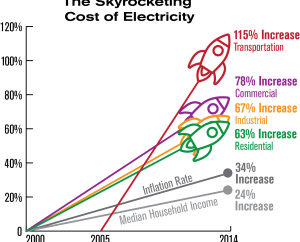Energy opportunity works through switch closeout, where each affiliation offers to sell its energy at the most decreased conceivable rate. Free affiliations buy the energy expected to suit the superior they expect, and Power to Choose the best rate for their clients.

Energy is suitably gone on through the current utility foundation. The help affiliations that own the framework are committed to sending energy, however not for setting the rate energy clients to pay. This cycle awards energy clients to get similar help, however at a rate that meets their requirements.
A short history of energy opportunity :
What is an energy opportunity? To truly see the value in the capacity of a liberated energy market, you truly need to comprehend the recorded foundation of energy in the U.S.
Energy in the early United States
At the beginning of power and burnable gas use, energy utilities were not composed. Utilities searched for clients, which held costs down. Purdue University considered that to be cross-country interest for energy broadened, power affiliations reacted by building more noteworthy force plants, which further decreased energy costs. To remain awful, organization affiliations are expected to manage the capacity of their energy creation and development frameworks. This accomplished a typical benefit for utilities and energy clients the same, with reasonable energy and lively monetary new development.
Sadly, quick new development and weak association unfavourably affected the foundation. Various affiliations made and sent energy, and oversaw transport shockingly. Without a uniform strategy to pass on energy, energy clients reliably moved away from everyone’s warning, and some were even left without association. Moreover, while utilities wanted to convey, give and of course energy, scarcely any assistance relationship of the time played out as far as possible in general. This accomplished a wrecked framework with clashing execution and broadly fluctuating costs.
1) An advance toward energy rule
To choose these issues and suggest dependable assistance to energy clients, the US government passed the Public Utility Holding Company Act (reliably intimated as “PUHCA”) in 1935. PUCHA was a reaction to the restricted fundamental courses of action maintained by colossal utility holding affiliations, which were becoming energy driving strategies. For example, by the mid-1930s, three such holding affiliations controlled, all things considered, a tremendous piece of the utility business in the United States.
Costs rose by and large further during the energy emergencies that were administered in the 1970s when spikes in oil costs broadened energy costs. Considering high gas costs, organization affiliations started extreme improvement projects as they changed to plants that made power utilizing coal or uranium. The expense of these mammoth activities was gone to energy clients, who had no real decision except to pay what the help affiliations referenced.
2) The FERC and energy opportunity
Undoubtedly, even with more luxurious costs, different assisted relationships with managing the cost of the expenses from building their new force plants. Many vacillated essentially area 11, while others referenced that NERC controllers support much more noticeable cost climbs. Unquestionably the energy framework was again in an emergency, this time considering the extremely administrative activities expected to screen it.
In 1977, the public government reacted with the Federal Energy Regulatory Commission (FERC). FERC made the striking advance of liberating the energy business, surrendering it to specific states to wrap up how to supply energy to energy clients. With a now-standard energy framework, it was possible to bring market dispute once more into still uncertain ways to reduce down energy expenses.
